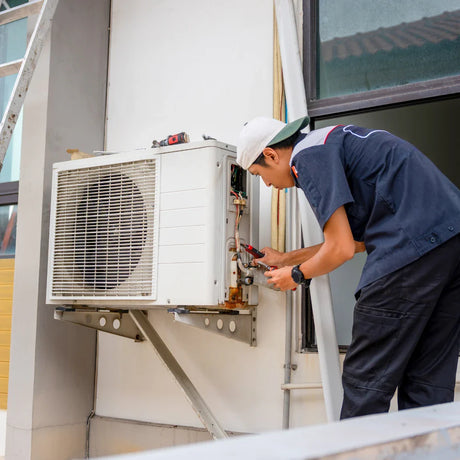
Hasznos tartalmak
Napenergia rendszerek - Napelemek, inverterek, akkumulátorok
View allKlímaberendezések - Típusok, előnyök, tudnivalók
View allTudástár
View all-
Manifold – A fundamental element of heating systems
Manifold – A fundamental element of heating systems
The manifold is an essential element of modern heating systems, enabling the efficient distribution of thermal energy between different heating circuits. It ensures balanced operation of the system and increases...
-
Surface heating – A comfortable and energy-saving solution
Surface heating – A comfortable and energy-saving solution
Surface heating is a modern, convenient and energy-saving solution that provides even heat distribution across the entire surface of the floor, wall or ceiling. It is an ideal choice for...
-
Heat demand – How do we calculate the energy demand of buildings?
Heat demand – How do we calculate the energy demand of buildings?
Heat demand is a fundamental indicator of the heating energy demand of buildings, which helps in the accurate sizing of systems and improving energy efficiency.
-
Temperature gradient – Why is it important in heating systems?
Temperature gradient – Why is it important in heating systems?
The temperature gradient is a key indicator of heating and cooling systems, representing the difference between the supply and return temperatures. It helps to optimize the energy efficiency and operation...
-
Combi gas boiler – Heating and hot water in one device
Combi gas boiler – Heating and hot water in one device
A gas combi boiler is a compact and energy-efficient solution that provides both heating and instant hot water for your home. It is an ideal choice for smaller houses or...
-
Condensing gas boiler – Efficient and energy-saving heating solution
Condensing gas boiler – Efficient and energy-saving heating solution
The condensing boiler is the cutting edge of modern heating systems, offering the perfect combination of energy efficiency and environmental friendliness. It is an ideal choice for low-temperature heating systems...
-
Heat Transfer – The Basic Process of Energy Transfer
Heat Transfer – The Basic Process of Energy Transfer
Heat transfer is the fundamental process of energy transfer, occurring through conduction, convection, and radiation. These mechanisms play a crucial role in everything from the energy efficiency of buildings to...
-
Circuit – How does the path of electrical energy work?
Circuit – How does the path of electrical energy work?
A circuit is a fundamental element in the transmission of electrical energy that enables the operation of consumers. A closed system includes the power source, conductors, and consumers, which work...
-
Volt (V) – What does the unit of measurement for voltage mean?
Volt (V) – What does the unit of measurement for voltage mean?
The volt (V) is a unit of measurement for electrical voltage, a fundamental element in electrical circuits. Voltage is the key to energy transfer, determining the operation and efficiency of...
-
Electricity – The foundation of modern energy use
Electricity – The foundation of modern energy use
Electricity is the driving force of modern society, present in all aspects of life. Renewable sources and smart grids are the key to a sustainable future.
-
Surge voltage – A safety challenge for electrical systems
Surge voltage – A safety challenge for electrical systems
Surge is one of the biggest challenges in electrical systems, which can damage sensitive equipment. Proper protection, such as surge arresters and grounding systems, is key to safety and increasing...
-
Charge Controller – Protecting Batteries and Increasing Their Efficiency
Charge Controller – Protecting Batteries and Increasing Their Efficiency
The charge controller plays a key role in solar systems, protecting the battery from overcharging and deep discharge while maximizing energy efficiency. Choosing the right type and regular maintenance are...









